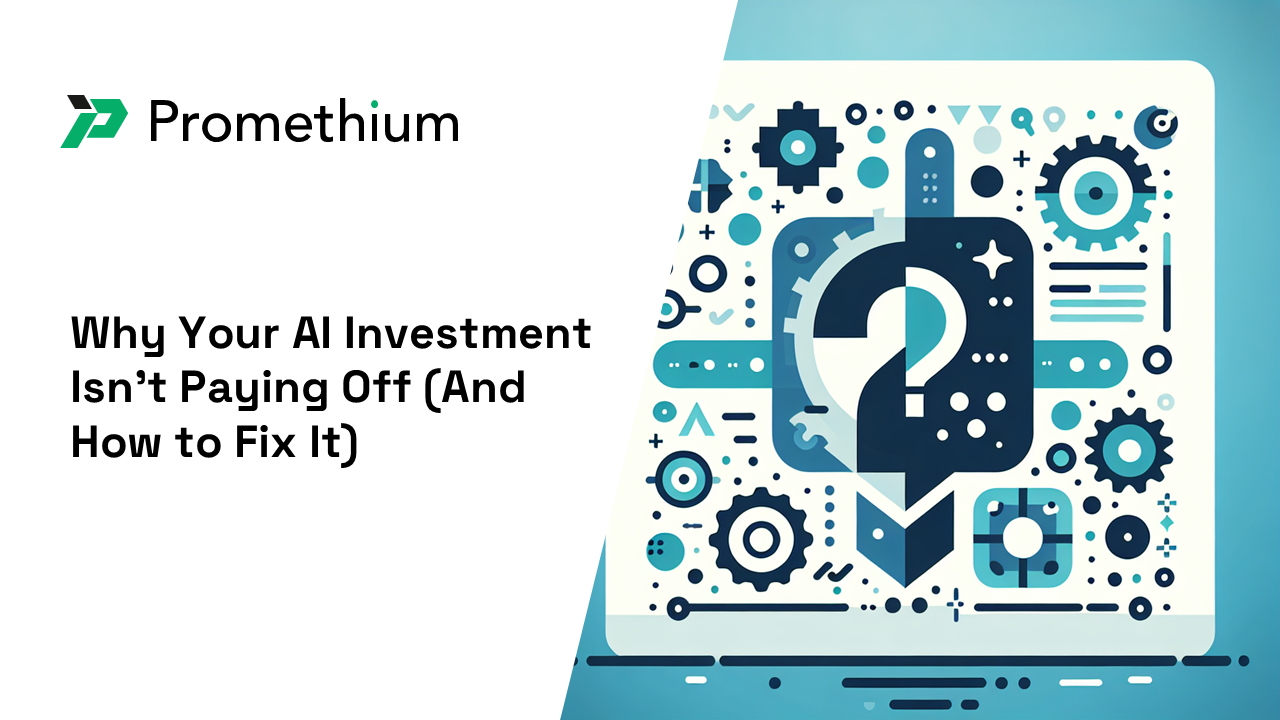Your AI can analyze customer sentiment, predict market trends, and automate complex workflows. But when your finance team asks to compare Q4 revenue performance across product lines with regional sales data from your CRM and cost breakdowns from your ERP system, it struggles to give you a straight answer.
Sound familiar?
You’re not alone. Gartner research shows that 60% of AI initiatives fail to reach production, and the culprit isn’t what most executives expect. It’s not the algorithms, the talent, or even the budget. It’s something far more fundamental: your data foundation.
The Enterprise Data Reality Check
Here’s what we’re seeing across a typical enterprise organization:
- Enterprise applications average 900+ systems, with less than 30% properly integrated
- Companies typically run 3-6 different data platforms, each with its own formats and access patterns
- 60% of organizations report taking over a week to answer basic cross-functional business questions
- Data quality issues affect 84% of AI projects, causing delays and inaccurate results
The result? Your AI gets trained on incomplete pictures and delivers confident answers based on partial truths.
Three Core Data Challenges Blocking AI Success
1. The Visibility Gap
Your most valuable business data lives in silos across Salesforce, SAP, Snowflake, and dozens of other systems. Traditional ETL pipelines connect some of these dots, but AI needs comprehensive, real-time access to deliver accurate insights. When your model can only see 40% of relevant data, its predictions reflect that limitation.
2. The Context Problem
Even when AI can access your data, it often lacks business context. “Customer lifetime value” means different things to your marketing, sales, and finance teams. Without unified definitions and relationships, AI outputs become internally inconsistent and difficult to trust.
3. The Speed Mismatch
Today’s data pipelines were designed for weekly reports, not dynamic AI analysis. Business questions evolve rapidly, but traditional data preparation takes weeks. By the time your data is “AI-ready,” the business opportunity has often passed.
What Leading Organizations Are Doing Differently
Companies successfully scaling AI share three common approaches:
Unified Data Access: They’ve moved beyond traditional pipelines to create real-time data fabrics that give AI instant access to enterprise information without complex preprocessing.
Semantic Consistency: They’ve invested in metadata management via business glossaries and data catalogs that ensure AI understands what data means across different contexts and departments.
Agile Data Architecture: They’ve built flexible systems that can adapt to new data sources and changing business questions without extensive engineering overhead.
Read the complementary Gartner® report about complementing fabric architecture and mesh principles
A Practical Example
Consider a retail company’s finance team trying to understand profit margins across product categories. They need to answer: “Which product lines had the highest profit margins last quarter, and what factors contributed to those results?”
This seemingly simple question requires data from multiple enterprise systems:
- Revenue data from Salesforce (actual sales transactions)
- Cost of goods sold from their ERP system (raw materials, manufacturing)
- Marketing spend from Adobe Marketing Cloud (campaign attribution)
- Inventory costs from their warehouse management system
- Shipping and fulfillment costs from logistics platforms
Traditional approaches might provide revenue data from one system and basic cost data from another. But comprehensive profit analysis requires real-time access to all these data sources, with consistent definitions of “profit margin” across finance, operations, and marketing teams.
AI with comprehensive data access can integrate all these factors simultaneously, accounting for different cost allocation methods, seasonal variations, and regional differences. The difference in analysis depth and accuracy can be transformational — enabling precise identification of the most profitable products and the specific drivers behind that profitability.
The Path Forward
The AI revolution is happening now, but success depends on getting the fundamentals right. Organizations that invest in solid data foundations alongside AI capabilities are seeing measurable returns — improved decision speed, better prediction accuracy, and more confident business leaders.
These challenges aren’t insurmountable, but they require a fundamental shift in how we think about enterprise data architecture. The solution isn’t just better tools — it’s a new approach that puts context, accessibility, and real-time integration at the center of your AI strategy.
Ready to understand exactly what’s blocking your AI initiatives? Our comprehensive white paper explores these data architecture challenges in detail, with real-world examples and emerging solutions that leading organizations are using to unlock AI’s full potential.




